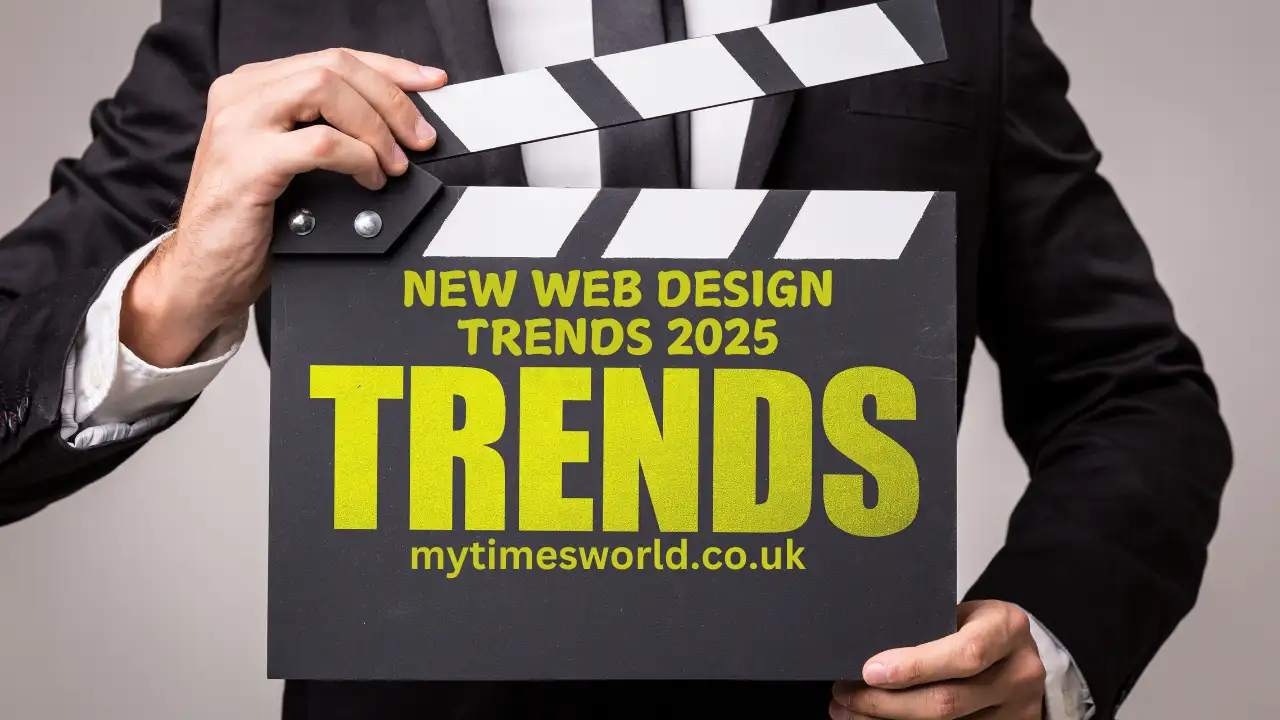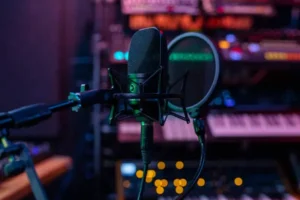Web design is an ever-evolving field, with new trends emerging every year. As we move into 2025, there are exciting new web design trends that businesses and individuals need to be aware of. Whether you’re a seasoned web designer or someone new to the field, understanding these trends can help you stay ahead of the curve and create visually appealing, user-friendly websites.
In this blog post, we will take an in-depth look at the latest web design trends for 2025, exploring their importance and how they can enhance your website’s user experience. We’ll break down each trend into simple, easy-to-understand language so that even beginners can follow along.
Minimalist Design with Bold Elements
Minimalism has been a key trend in web design for years, and it continues to thrive in 2025. However, this year, minimalism is paired with bold elements, making it more dynamic and engaging. Here’s what that means:
- Minimalism: It’s all about using fewer elements, giving the website a clean and organized look. Websites with minimalistic designs are easy to navigate and focus on delivering a smooth user experience.
- Bold Elements: This includes large fonts, striking colors, and high-contrast visuals. These bold features grab the visitor’s attention and make important information stand out.
By combining minimalism with bold elements, designers can create websites that are not only visually stunning but also functional and user-friendly.
How to Apply This Trend:
To implement this trend on your website, try to use plenty of white space while incorporating larger fonts and bright colors for headings or call-to-action buttons. Keep the layout simple but striking with a few bold design choices.
Dark Mode and Light Mode Toggle
Dark mode has been gaining popularity over the last few years, and in 2025, offering both dark and light mode options will be a must-have feature for modern websites. This trend offers users the ability to choose their preferred display setting based on their environment or personal preference.
Why It’s Important:
- User Comfort: Dark mode reduces eye strain, especially in low-light environments, making it a user-friendly option.
- Customization: Giving users the ability to toggle between light and dark modes enhances personalization, allowing them to interact with the website in a way that suits them best.
How to Apply This Trend:
You can easily add a toggle button on your website that lets visitors switch between light and dark modes. Ensure that your design works well in both modes by testing different color schemes to maintain readability and visual appeal.
AI-Powered Web Design Tools

Artificial Intelligence (AI) is transforming many industries, and web design is no exception. In 2025, AI-powered tools will become even more advanced, allowing designers to create smarter and more interactive websites. These tools help automate design tasks, such as generating layouts, optimizing images, and even personalizing content for individual users.
Benefits of AI in Web Design:
- Time-Saving: AI tools can help you complete repetitive tasks, like cropping images or arranging content blocks, in a fraction of the time.
- Personalization: AI can track user behavior and provide personalized experiences, showing users content that is most relevant to them.
- Accessibility: AI tools can help ensure that websites are accessible to all users, including those with disabilities.
How to Apply This Trend:
Consider using AI-powered platforms like Wix ADI or Bookmark to help automate your design process. Additionally, AI can be integrated into chatbots or recommendation engines to improve user experience.
Micro-Interactions for Enhanced User Engagement
Micro-interactions are small animations or visual responses that occur when a user interacts with a website. For example, when you hover over a button and it changes color, or when you scroll down and elements animate smoothly into view. These interactions are subtle but they make the website feel more interactive and engaging.
Why Micro-Interactions Matter:
- Enhance User Experience: Micro-interactions provide feedback to users, making the website feel more responsive and alive.
- Guide User Behavior: These small animations can guide users toward certain actions, like clicking a button or filling out a form.
- Add Delight: When done correctly, micro-interactions add an element of delight, making the website more enjoyable to navigate.
How to Apply This Trend:
Incorporate micro-interactions by adding hover effects on buttons, using animations when loading new content, or adding small feedback elements (like a heart icon that changes color when clicked). Keep it subtle to avoid overwhelming users.
Scrolling Experiences (Parallax Scrolling)
Scrolling experiences, particularly parallax scrolling, are set to be one of the biggest web design trends in 2025. Parallax scrolling creates an illusion of depth by having the background move at a slower pace than the foreground as the user scrolls. This effect can make websites more dynamic and immersive.
Benefits of Scrolling Experiences:
- Engagement: By making scrolling more interactive, users are more likely to stay engaged and explore different parts of the website.
- Storytelling: Parallax scrolling is great for storytelling, as it can be used to reveal content in a more engaging and sequential way.
- Memorability: A unique scrolling experience makes a website more memorable, leaving a lasting impression on visitors.
How to Apply This Trend:
You can use parallax effects to create engaging sections on your website, especially on landing pages. Keep in mind that this effect should be used sparingly, as too much movement can make navigation confusing or overwhelming for users.
Voice User Interface (VUI) Integration
With the rise of voice assistants like Siri, Alexa, and Google Assistant, more people are using voice commands to interact with technology. In 2025, websites are increasingly integrating voice user interfaces (VUI), allowing users to navigate and search using voice commands.
Why VUI Is a Game-Changer:
- Accessibility: Voice commands make websites more accessible for users with disabilities or those who prefer voice input over traditional typing.
- Convenience: Voice interfaces offer a quicker, hands-free way to interact with a website.
- User Preference: As more users become accustomed to using voice assistants in their daily lives, they will expect the same functionality from websites.
How to Apply This Trend:
To integrate voice search on your website, you can use services like Google Voice Search API. Ensure that the website is optimized for voice search queries by focusing on conversational language and long-tail keywords.
3D Elements and Immersive Design
With advancements in technology, 3D elements are becoming more common in web design, and in 2025, they are set to become even more widespread. 3D elements can add depth and realism to a website, making it more visually engaging.
Why Use 3D Elements?
- Immersive Experience: 3D designs can make users feel like they are interacting with something real, which enhances the overall user experience.
- Unique Look: Adding 3D elements can make your website stand out from the competition and create a memorable experience for visitors.
- Versatility: 3D elements can be used in a variety of ways, from product showcases to interactive storytelling.
How to Apply This Trend:
Incorporate 3D elements on your homepage or product pages to showcase items in an interactive way. However, be mindful of website performance and loading times, as 3D elements can be resource-heavy.
Augmented Reality (AR) Integration
Augmented Reality (AR) is another technology that is becoming more prominent in web design. AR allows users to interact with digital content overlaid onto the real world. In 2025, AR will play a significant role in e-commerce websites, where users can visualize products in their environment before making a purchase.
How AR Benefits Web Design:
- Improved Shopping Experience: AR allows customers to try out products virtually, increasing their confidence in making purchases.
- Interactive Experience: AR creates a fun, engaging experience that encourages users to spend more time on a website.
- Stand Out: Integrating AR sets your website apart from competitors, offering a more immersive and advanced user experience.
How to Apply This Trend:
For e-commerce websites, you can integrate AR to allow users to visualize products in their space, such as furniture or clothing. Tools like WebAR can help you add AR elements to your website without requiring a mobile app.
Advanced Typography for Better Readability

Typography is a crucial element in web design, and in 2025, designers are focusing more on advanced typography to improve readability and aesthetics. This trend includes the use of variable fonts, custom typography, and text layouts that adapt based on screen size.
Why Typography Matters:
- Improved User Experience: Easy-to-read fonts and proper text spacing improve the overall user experience, making content more digestible.
- Branding: Custom typography helps brands stand out and create a unique visual identity.
- Responsive Design: Advanced typography adapts to different screen sizes, ensuring readability on both desktop and mobile devices.
How to Apply This Trend:
Experiment with different font styles and sizes to find a balance between creativity and readability. Make sure your typography is legible across all devices and screen sizes.
Sustainable Web Design
In 2025, there’s a growing focus on sustainability in all industries, and web design is no exception. Sustainable web design is all about creating websites that consume less energy and have a lower environmental impact.
How to Make Your Website Sustainable:
- Optimized Images and Videos: Compressing images and videos can reduce the amount of data that needs to be loaded, improving website speed and reducing energy consumption.
- Efficient Coding: Clean, efficient code can help reduce the amount of processing power needed to run a website.
- Green Hosting: Consider using web hosting providers that use renewable energy to power their servers.
Why It’s Important:
- Eco-Friendly: Reducing the carbon footprint of your website is good for the environment.
- User Experience: Sustainable websites often load faster and offer a smoother user experience.
Conclusion
As we head into 2025, web design continues to evolve with exciting new trends that focus on enhancing user experience, making websites more interactive, and embracing the latest technologies. Whether you’re integrating AI, offering dark mode, or adding AR features, these trends can help you create a modern, engaging website.
By staying informed and implementing these trends, you can ensure that your website not only looks great but also provides a seamless experience for all users. Remember to keep your design simple, user-focused, and adaptable to the changing digital landscape.
Frequently Asked Questions (FAQ)
1. Why should I follow web design trends?
Staying updated with web design trends ensures that your website remains modern, user-friendly, and competitive. Trends evolve based on user preferences and technological advancements, so incorporating them can enhance the overall experience for your visitors, making your website more engaging and efficient.
2. How can I implement minimalism in web design without making my site too plain?
To apply minimalism effectively, focus on simplicity while keeping key design elements bold and engaging. Use large fonts, bright colors, or high-contrast visuals to highlight important sections. This approach allows for a clean layout with impactful design features that attract attention without cluttering the space.
3. Is dark mode necessary for my website?
Offering both dark and light modes enhances user comfort and gives them the flexibility to choose their preferred viewing mode. While it’s not mandatory, providing a dark mode option can improve accessibility, especially for users who prefer low-light environments, thereby improving the overall user experience.
4. How can I make my website more interactive without overwhelming users?
You can incorporate subtle micro-interactions, such as hover effects, animations, or scrolling experiences like parallax scrolling. These interactions should be used sparingly to avoid overwhelming users while still creating a more dynamic and engaging browsing experience.
5. Will integrating AI tools into my website be expensive?
AI-powered design tools are becoming more accessible and affordable. Some platforms, like Wix ADI and Bookmark, offer AI-based solutions at various price points. You can choose the level of AI integration that fits your budget, starting with smaller features like AI chatbots or personalized content suggestions.
6. How can I ensure that my website’s 3D elements don’t slow down the site?
To prevent 3D elements from affecting site performance, optimize them by compressing file sizes and using lightweight formats. Test your website’s loading times frequently and balance 3D content with other elements. Ensure that you don’t overuse 3D, as too many heavy elements can slow down loading times, which negatively impacts user experience.
7. What are the benefits of using Augmented Reality (AR) on a website?
AR enhances the user experience by allowing visitors to interact with digital content in a more immersive way. For e-commerce, AR helps customers visualize products in their environment before purchasing, which can lead to higher engagement and conversion rates. AR integration can also set your website apart from competitors by offering a unique, futuristic experience.
8. What is sustainable web design, and why is it important?
Sustainable web design focuses on reducing the environmental impact of websites by optimizing performance, reducing energy consumption, and using eco-friendly hosting services. It’s important because it helps lower the carbon footprint of the digital world while providing faster, more efficient websites for users.
9. How do I know if my website needs a redesign to match 2025 trends?
If your website feels outdated, loads slowly, or has a high bounce rate, it may benefit from incorporating new trends. Regularly updating your design based on user feedback and modern trends ensures your site stays relevant and provides the best possible user experience. You can also assess competitor websites to see if your design lags behind in terms of functionality or aesthetics.
10. Can I implement these trends if I’m a beginner in web design?
Yes! Many of the 2025 web design trends, such as minimalist design, dark mode toggles, and AI tools, are beginner-friendly and can be implemented using website builders like Wix, WordPress, or Squarespace. These platforms offer pre-made templates and features that allow even beginners to create modern, trendy websites with ease.







Be First to Comment